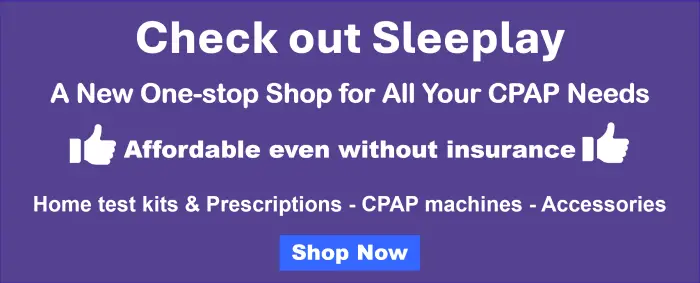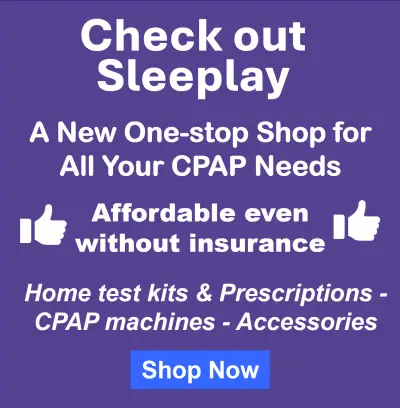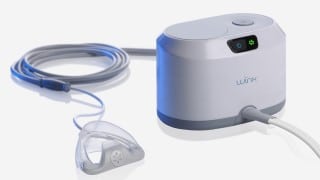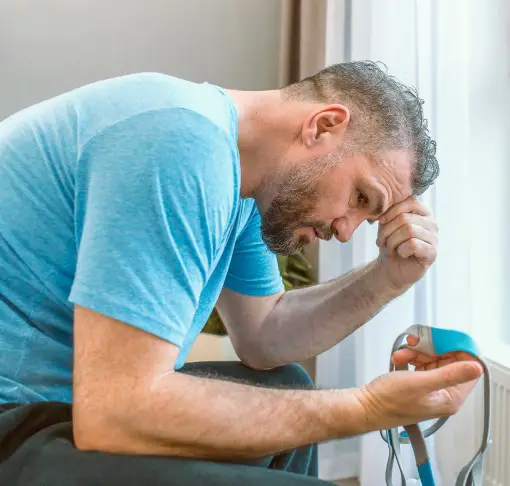
The Latest Sleep Apnea Devices and Treatments: A Complete List (A to Z)
By Jason Wooden, PhD | Last updated: February 8, 2025
While CPAP is one of the most effective treatments for sleep apnea, many patients stop using their machines within a year. Good news – there are now more alternatives than ever before.
The latest sleep apnea devices include more comfortable air pressure systems, body positioners, innovative oral appliances, pacemaker like devices, and a new daytime treatment that’s used for just 20 minutes.
A) The truth about sleep apnea treatment
You’re certainly not the only one struggling with sleep apnea and finding a treatment that works for you.
Sleep apnea is a common sleep disorder in which breathing stops or get shallow during sleep. These breathing interruptions is what wrecks your sleep.
Would you believe it’s estimated that worldwide around a billion people suffer from sleep apnea?
CPAP (Continuous Positive Airway Pressure) uses an air pump and face mask to apply mild air pressure which helps keep the airway open during sleep. It’s one of the most effective treatments for sleep apnea and can be a real-life changer.
Unfortunately, many patients stop using their CPAP machines within the first year of treatment.
Almost half of patients who try wearing the CPAP mask while sleeping can’t tolerate it.
Luckily, CPAP has worked out for me but I know people who gave up.
Some find the CPAP mask uncomfortable while others complain about the blowing air, system leaks, dry nose, red eye, and nasal congestion. The noise may also be nuisance for the sleep of the patient and a bedmate.
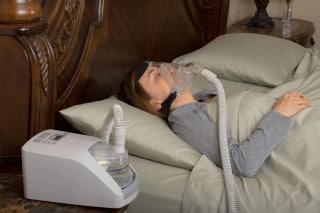
So, while CPAP is great when it’s working, it doesn’t work for everyone.
If this describes you, don’t give up – the health effects of untreated sleep apnea are serious.
It can also increase your risk for other serious health challenges such as high blood pressure, heart disease, stroke, diabetes, and depression.
Before you pull the plug on CPAP, a couple questions:
- Have you tried any of these practical remedies?
- Have you tried sleep counseling? Research shows it can really make a difference for people starting CPAP. (You can read more about this here.)
If you’ve tried everything you can think of (including counseling), it’s really important to find an alternative as soon as you can.
In the past, your choices have been limited to oral appliances and surgery in some cases. (Oral appliances are devices which are used to reposition the jaw and tongue so that the airway stays more open).
Today there are more sleep apnea treatment options than ever before with more on the way.
If you’re suffering from sleep apnea, there’s no reason to keep living in misery, so don’t give up!
What’s your sleep apnea type?
Obstructive Sleep Apnea, the most common type, is mechanical problem in which the muscles in the throat relax during sleep causing the airway to collapse.
Central Sleep Apnea is less common and occurs when the brain fails to sent the right signals to the muscles that control breathing.
Complex Sleep Apnea is when you have symptoms of both obstructive and central sleep apnea.
What’s your sleep apnea type?
Obstructive Sleep Apnea, the most common type, is mechanical problem in which the muscles in the throat relax during sleep causing the airway to collapse.
Central Sleep Apnea is less common and occurs when the brain fails to sent the right signals to the muscles that control breathing.
Complex Sleep Apnea is when you have symptoms of both obstructive and central sleep apnea.
What’s your sleep apnea type?
Obstructive Sleep Apnea, the most common type, is mechanical problem in which the muscles in the throat relax during sleep causing the airway to collapse.
Central Sleep Apnea is less common and occurs when the brain fails to sent the right signals to the muscles that control breathing.
Complex Sleep Apnea is when you have symptoms of both obstructive and central sleep apnea.
B) New sleep apnea devices and treatments approved by FDA (most recent)
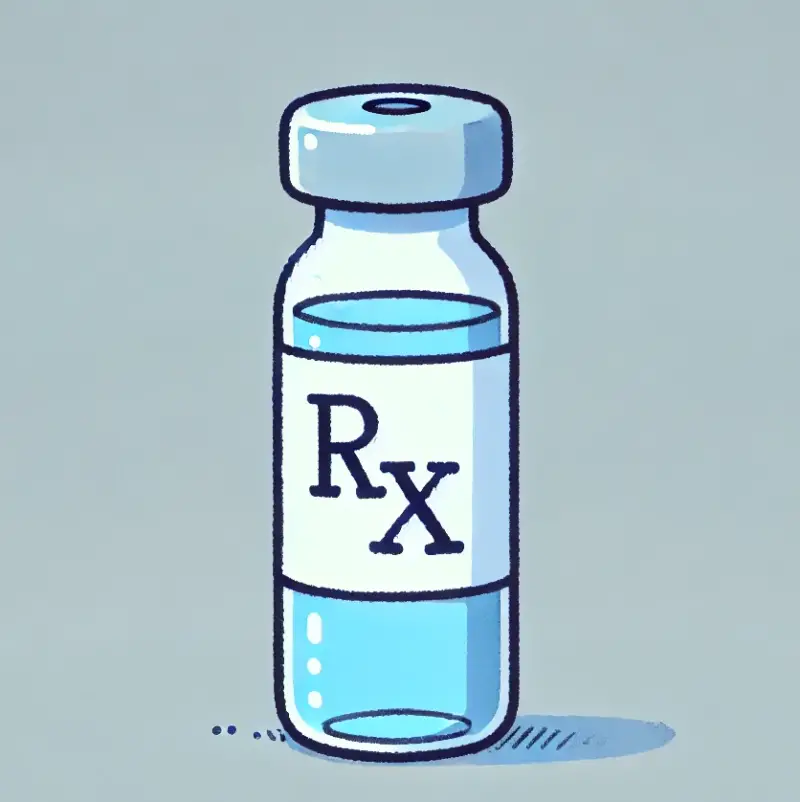
Zepbound (tirzepatide)
Approved: December 2024
Description: Injectable medication that suppresses appetite and food intake leading to weight loss and improved OSA symptoms
For: moderate to severe obstructive sleep apnea in adults with obesity
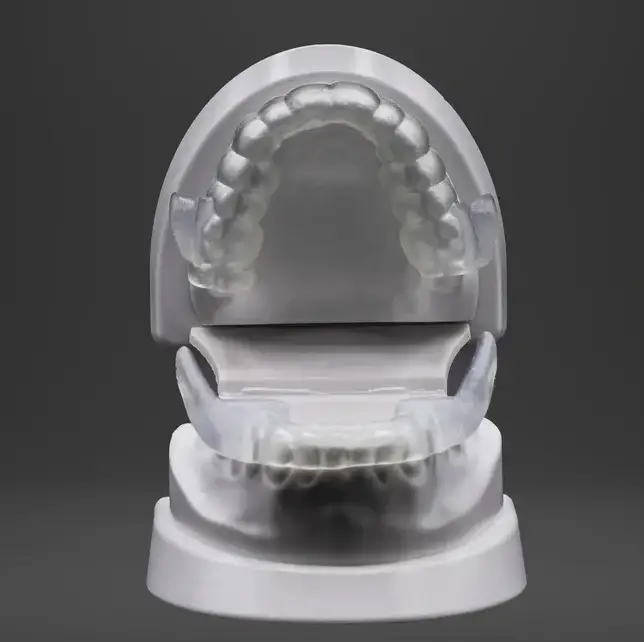
AIO BREATHE
Approved: February 2024
Description: Smaller and lighter, first mandibular repositioning device that increases the size of the airway while others only prevent airway closure during sleep
For: snoring and mild obstructive sleep apnea
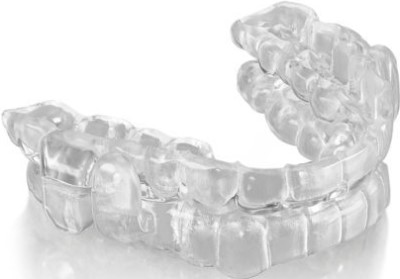
ProSomnus EVO™ [PH] Sleep and Snore Device
Approved: October 2022
- ProSomnus® Announces FDA 510(k) Clearance for ProSomnus EVO™ [PH] Sleep and Snore Device (globenewswire.com)
- FDA notification of 510(k) Clearance (October 6, 2022)
Description:
- Uses new medical grade polymers and hinge components to reposition and stabilize the jaw which helps keep the airway open during sleep
- Thinner, less bulky, less intrusive, and more comfortable than other oral appliances.
For: snoring, mild to moderate sleep apnea
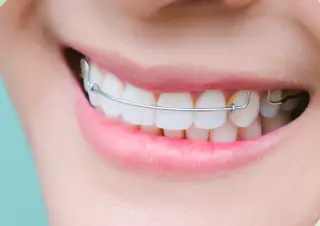
Vivos
Approved: August 2021
Description:
Repositions and trains the jaw so the airway is less obstructed
For: snoring, mild to moderate sleep apnea
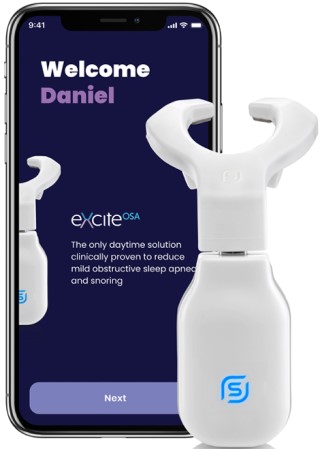
eXciteOSA
Approved: February 2021
Description:
Worn 20 minutes during the day while awake to train the tongue and upper airway muscles to stay in position so the airway is less obstructed
For: snoring and mild obstructive sleep apnea
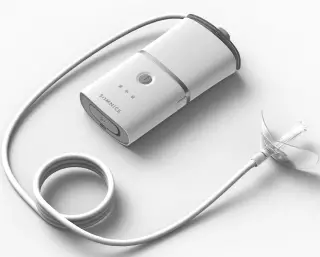
iNAP
Approved: May 2020
Description:
Uses a light suction to move the tongue forward and open up the airway.
For: obstructive sleep apnea (all severities)
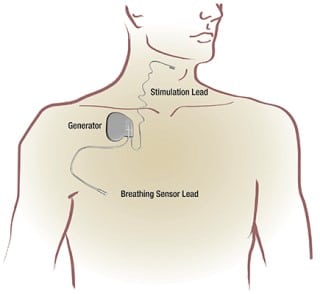
Inspire Upper Airway Stimulation Device
Approved: March 2023
Description:
Surgically implanted in the chest and turned on using a remote, monitors your breathing during sleep and stimulates a nerve to open up the upper airway as needed.
For: obstructive sleep apnea
Useful links for new devices and treatments
US:
FDA Device Approvals, Denials, and Clearances (FDA.gov)
FDA Clearance vs. FDA Approval Process for Medical Devices (GoodRx)
Canada:
Drug and Health Product Portal
Medical Devices | Drug and Health Products Portal
C) Latest sleep apnea devices & treatments (full list)
With more options than ever before, we’re living in a golden age for sleep apnea treatment. As you browse through the list of the latest sleep apnea devices, here are some things to keep in mind:
Who is it recommended for?
Many of the latest sleep apnea treatments are for obstructive sleep apnea which is the type that most people have. Some will also work for central sleep apnea.
You need a treatment that works for your specific sleep apnea type. If you’re not sure about this, get diagnosed.
Prescription requirement
Most of the treatments are medical devices which by law require a prescription in the US and many other countries. For this reason, you’ll have to work with a doctor to get properly diagnosed and a recommendation for a specific treatment.
Insurance coverage
Depending on your diagnosis, some are covered by insurance while others are covered partially or not all.
A sleep specialist can help you explore the latest sleep apnea devices and treatments:
- figure out which ones to try
- get a prescription
- qualify for insurance
Here’s a quick look at all of the CPAP alternatives:
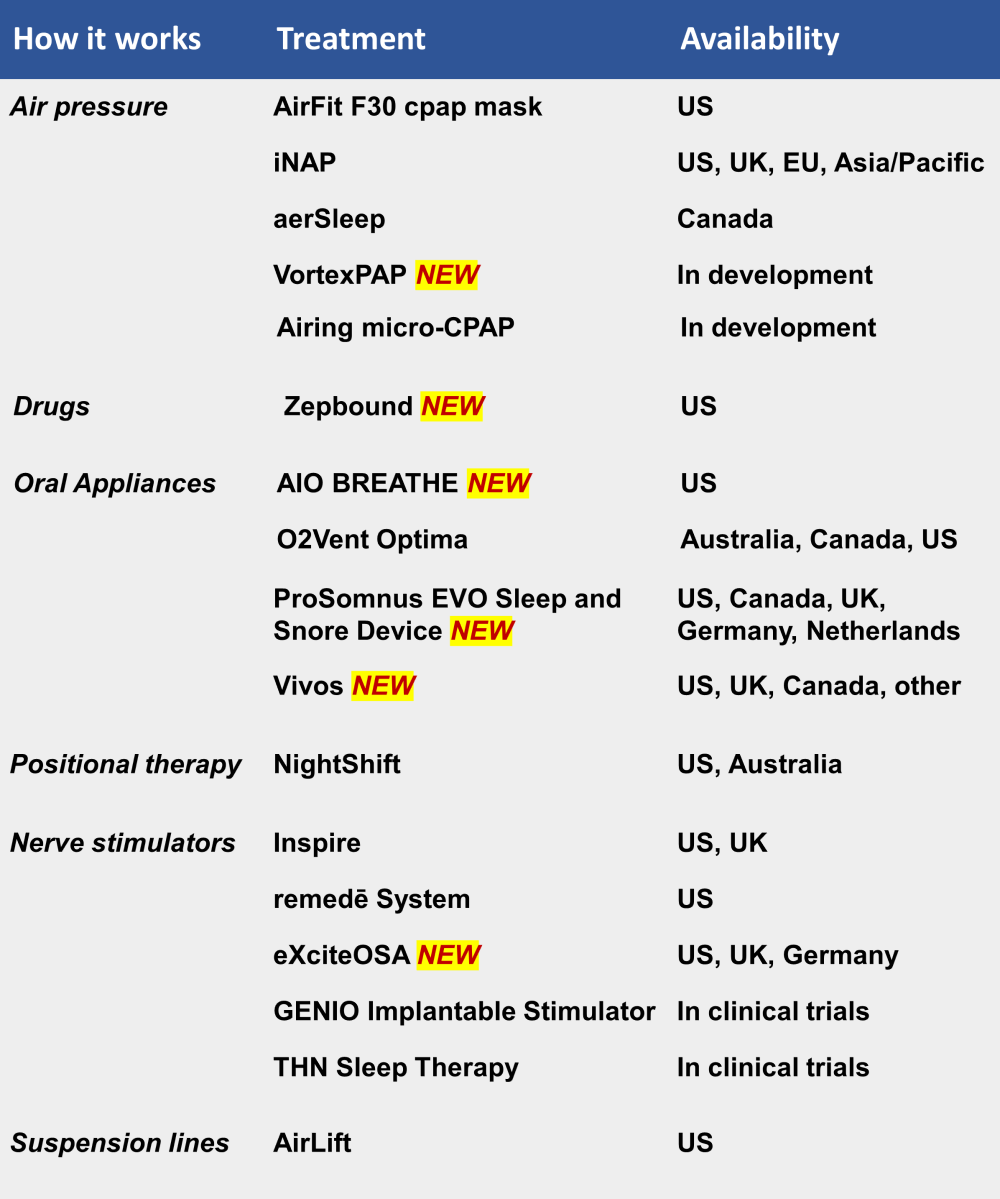
Recommended for obstructive sleep apnea: AIO BREATHE NEW, AirFit F30 cpap mask, Airing micro-CPAP, aerSleep, AirLift, eXciteOSA NEW, GENIO, iNAP, Inspire, NightShift, O2Vent Optima, ProSomnus EVO NEW, THN Sleep Therapy, Vivos NEW, VortexPAP NEW, Zepbound NEW
Recommended for central sleep apnea: AirFit F30 cpap mask, remede System
Air pressure treatments:
Uses air pressure to help keep your throat more open.
AirFit F30 cpap mask (US, UK, Australia, Canada)
iNAP NEW (US, UK, Australia, Canada)
aerSleep (Canada; awaiting approval elsewhere)
Airing micro-CPAP (in development)
VortexPAP (in development)
Drugs:
Zepbound NEW (US)
Oral Appliances:
Re-positions the jaws, tongue, and mouth to keep airway more open.
O2Vent Optima (Australia, Canada, US)
ProSomnus NEW (US, Canada, UK, Germany, Netherlands)
Vivos NEW (US, UK, Canada, Singapore, Other)
AIO BREATHE NEW (UA)
Positional therapy:
Trains you to sleep on your side instead of your back which can help keep the airway more open.
NightShift (US, Australia)
Breathing pacemakers:
Doctors implant a pacemaker-like device that stimulates the body to keep the airway more open.
Inspire (US, UK)
remede System (US)
eXciteOSA NEW (US, UK, Germany)
GENIO (approved in EU)
THN Sleep Therapy (clinical trials)
No longer available:
- NightBalance
- Provent Sleep Apnea Therapy
- Winx Sleep Therapy System
Here’s a more in depth look at the latest sleep apnea devices and CPAP alternatives for treatment:
AIR PRESSURE
AirFit F30 CPAP mask:
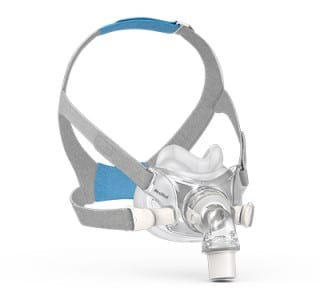
How it works: The AirFit F30 is a smaller full-face mask designed to sit more comfortably, cover less of your face, and leave behind fewer facial marks.
Recommended for: obstructive and central sleep apnea
Proof it works: ResMed clinical studies, CPAP users preferred this type of mask over others and found it more comfortable.
Pros:
- quieter
- fewer facial marks and less irritation
- better for wearing glasses
- easier to sleep on your side
- fewer sleep disruptions from vent flow for users and their bed partners
Cons:
- some may still find a mask uncomfortable
- prone to leakage in certain positions if not fitted properly
Availability:
US local suppliers
US authorized online suppliers
UK
Ireland
Australia
Canada
Insurance coverage: covered by most insurance providers
Made by: ResMed
iNAP:

How it works: Unlike CPAP which uses positive air pressure to open up the airway, iNAP uses a light suction to move the tongue forward and open up the airway.
Recommended for: obstructive sleep apnea (all severities)
Proof it works: clinical studies
Pros:
- no mask or headgear
- battery-powered
- quiet
- compact and portable
- receive therapy within days after signing up
- personalized onboarding with customer care team
- phone app to help manage therapy
Cons:
- must be able to breathe well through the nose during sleep
- must be free of major issues with teeth, gums, soft palate, or nasal / sinus issues
Availability: US, UK, EU and Asia/Pacific (select countries)
Insurance coverage: Available for purchase or a monthly membership fee; may be eligible for coverage under HSA/FSA employer plans
Made by: Somnics Health, Inc.
Frequently Asked Questions (FAQs)
aerSleep:
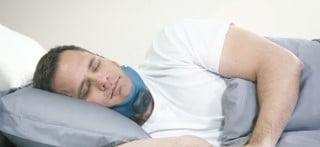
How it works: Uses a battery-operated tiny pump to create a vacuum on the outside of the neck which shifts throat tissues and the tongue forward to keep the airway open.
Recommended for: obstructive sleep apnea
Proof it works: clinical study; currently being evaluated in additional clinical trials
Pros:
- non-invasive, discrete
- small and portable
- no masks, machine, hoses, cords, or humidifiers required
- quick set up
Cons:
- may not work as well on patients with facial hair around mandible and neck area
- may cause mild redness on neck for 20-30 minutes after use
Availability: Canada; awaiting approval in US, Australia, Europe, and Asia
Insurance coverage: may not be covered by all insurance plans
Made by: Sommetrics, Inc.
E-mail (US): [email protected] (US)
E-mail (Canada): [email protected]
Frequently Asked Questions
VortexPAP:
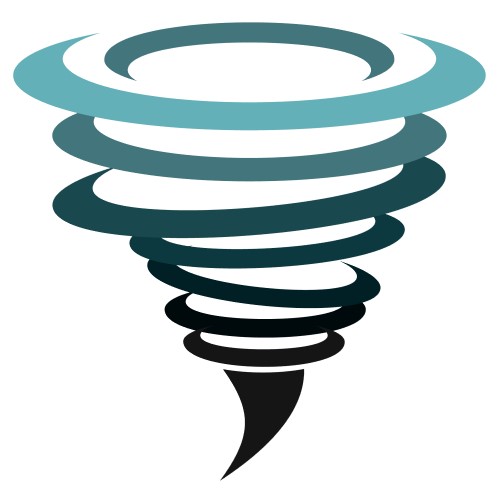
How it works: Uses vortex airflow to keep the airway more open without the need for a tight mask seal; Designed to be less intrusive and barely touch the face for a more comfortable fit
Recommended for: To be determined
Proof it works: under development
Pros: less intrusive, barely touches the face
Cons: too soon to know
Availability: under development
Insurance coverage: To be determined
Made by: Under development by University of Cincinnati researchers
Airing Micro-CPAP:

How it works: Will use positive air pressure to keep the throat more open and promote breathing during sleep. Device will be a disposable battery-operated nose implant that contains hundreds of micro-blowers to create airway pressure.
Recommended for: obstructive and central sleep apnea
Proof it works: under development
Pros: compact, no mask, lightweight, and cordless
Cons: too soon to know
Availability: under development
Made by: Airing
Recent news:
- Do Micro-CPAP Devices Work for Sleep Apnea? (Sep 2024)
- Review of Airing Micro-CPAP and Similar Devices (Jul 2024)
- Are Micro CPAP Machines Real? (Jan 4th, 2024)
- How an RN and Her Patient (Like You) Found Out Micro-CPAPs Don’t Work (Mar 25, 2022) [Cautionary tale of micro-CPAPs being sold online]
- Overview of the Airing Micro-CPAP Device
DRUGS
Zepbound (tirzepatide):

How it works: Mimics hormones that suppress appetite and food intake leading to weight loss and improved OSA symptoms
Recommended for: treatment of moderate to severe obstructive sleep apnea (OSA) in adults with obesity
Proof it works: clinical studies
Pros:
- only prescription medicine
- no mask or oral appliance
Cons:
- only effective for cases of sleep apnea that are related to obesity
- requires weekly injections
- weight loss must be maintained for sleep apnea benefits
- like any medication, side effects possible for some patients
ORAL APPLIANCES
AIO BREATHE:

How it works:
- Repositions the jaw to keep the airway more open during sleep
- According to manufacturer, first device that increases the size of the airway while others only prevent airway closure during sleep
Recommended for: mild to moderate sleep apnea, snoring
Proof it works: Non-clinical testing
Pros:
- increases the size of the airway while other mandibular repositioning devices only prevent airway closure
- first OSA medical device that has a mouth breather version
- no mask or headgear
- smaller and lighter
- noninvasive
Cons: Like many oral appliances, may not work as well for more severe sleep apnea
Availability: Online with prescription (US)
Insurance coverage: Inquire with seller
Made by: Aiomega
Recent news:
O2Vent Optima:
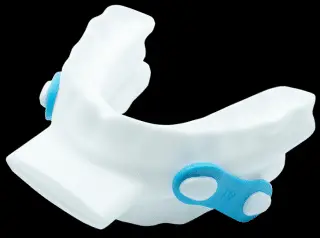
How it works: Mouthguard-like device that allows unobstructed air to flow to the back of the throat, bypassing common sites of obstruction such as the nose, tongue, and soft palate. Unlike other oral devices, it adds stability to the airway in two ways – moving the jaw forward and providing an airway channel.
Recommended for: snorers, obstructive sleep apnea (mild to moderate)
Proof it works: clinical studies
Pros:
- works in two different ways (moving the jaw + airway channel)
- lightweight and durable
- noninvasive
- good for patients who suffer nasal congestion or a blocked nose and revert to mouth breathing during sleep
- good for patients allergies or nasal congestion
Cons: may not work as well for more severe sleep apnea
ProSomnus EVO™ [PH] Sleep and Snore Device:

How it works: Uses new medical grade polymers and hinge components to more comfortably reposition and stabilize the patient’s jaw during sleep, increasing pharyngeal space and reducing the risk of upper airway collapse
Recommended for: snoring, obstructive sleep apnea (mild to moderate)
Proof it works: clinical studies
Pros:
- personalized and digitally manufactured based patient’s unique anatomy and treatment plan
- thinner, less bulky, less intrusive, and more comfortable than other oral appliances
- improved flexibility makes it even easier to use, durability protects from accidental drops
- non-invasive
- unlike CPAP machines, easier to take with you when you travel
Cons: Like many oral appliances, may not work as well for more severe sleep apnea
Availability: US, Canada, UK, Germany, Netherlands
Insurance coverage: Yes (US)
Made by: ProSomnus Sleep Technologies
Recent news:
- ProSomnus and Lovell Partner to Provide a CPAP Alternative Solution to Veterans with Sleep Apnea (2023)
- ProSomnus Announces Medicare Reimbursement for ProSomnus EVO [PH] Sleep Apnea and Snoring Device (2022)
- ProSomnus Announces FDA 510(k) Clearance for ProSomnus EVO [PH] Sleep and Snore Device (2022)
- FDA-510-k-Clearance-for-ProSomnus-EVO-PH-Sleep-and-Snore-Device.html
FDA notification of 510(k) Clearance (2022)
Vivos:

How it works: Uses a proprietary mouth appliance to reposition and train the jawbone so that the airway is not obstructed
Recommended for: mild to moderate sleep apnea, snoring
Proof it works: clinical studies
Pros:
- sleep apnea diagnosis can made at home using a sensor worn as a ring
- customized treatment plan that begins with simple and easy at-home sleep apnea screening
- non-surgical
- short-term treatment
- after completing treatment protocol, patients no longer require any type of OSA treatment
Cons: May not work as well for more severe sleep apnea
Availability: US, UK, Canada, Singapore, other countries (inquire)
Insurance coverage: inquire with manufacturer
Made by: Vivos Therapeutics, Inc
Recent news:
- Sleep Apnea: Vivos’ FDA-Cleared Technology Offers Revolutionary, Non-Invasive Hope for America’s Stealth Epidemic (Nov, 2024)
- Vivos Therapeutics Receives FDA 510(k) Clearance of its Flagship DNA Oral Appliance for Treatment of Obstructive Sleep Apnea (2023)
- Vivos Therapeutics Launches VivoScore Diagnostic Technology for Home Sleep Apnea Testing in Children and Adults
- New Smart Ring Diagnoses Sleep Apnea At Home
- FDA approves new device to reduce snoring and sleep apnea that’s worn for just 20 minutes during the day
POSITIONAL THERAPY
NightShift:
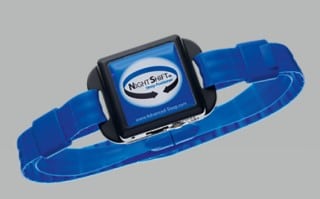
How it works: Trains patients to sleep in a healthier sleep position using a wearable device which vibrates when you sleep on your back and slowly increases in intensity until you change position.
Recommended for: positional obstructive sleep apnea (patients with airway obstruction that worsens when sleeping on back compared to other positions)
Proof it works: clinical studies
Pros:
- noninvasive
- easy to use
- comfortable
- easy to maintain
- can monitor your sleep
Cons:
- some may find it uncomfortable
- may not work as well with patients with acute neck, shoulder, back pain, or issues such as skin sensitivity
- not covered by insurance
Availability: US (physician network) and Australia (online) via prescription
Insurance coverage: may qualify toward your high deductible healthcare insurance (per manufacturer website)
Made by: Advanced Brain Monitoring, Inc.
Frequently Asked Questions
Recent news:
NERVE STIMULATORS
Inspire Upper Airway Stimulation Device:

How it works: A small device is surgically implanted in the chest and can be turned on using a remote. During sleep, it monitors your breathing and stimulates a nerve that keeps the upper airway open.
Recommended for: obstructive sleep apnea (find out here if you qualify)
Proof it works: clinical studies
Pros:
- no mask or oral appliance
- less invasive than conventional obstructive sleep apnea surgeries
- preserves the natural airway anatomy
- designed to work with body’s natural anatomy & breathing processes
- simple, easy to use
Cons:
- requires surgery, although minimal (all surgeries carry a small risk)
- some patients might feel a mild tingling sensation when in use
- potential limitations on participating in very strenuous activities for the upper body
Availability: US, Canada, UK; other countries, check with manufacturer
Insurance coverage: US, inquire for other countries
Covered on a case by case basis (learn more)
Made by: Inspire Medical Systems, Inc
Recent news:
- FDA approves next generation Inspire V therapy system (Aug 2024)
- Inspire Sleep Apnea Device Review 2024
- FDA OKs obstructive sleep apnea nerve stimulator for pediatric patients with Down syndrome (2023)
- Chicago-area man says Inspire changed his life (NBC Chicago)
- Ohio State otolaryngologist implants more upper airway stimulation devices than anyone in the world
- Therapy Update: Implanted Neurostimulators for Sleep Apnea
- Couple struggling with sleep apnea finds relief
- Medicare contractors back use of Inspire’s sleep apnea device
- UnitedHealth backs Inspire Medical’s sleep apnea implant
- Therapy Update: Implanted Neurostimulators for Sleep Apnea
remedē System:
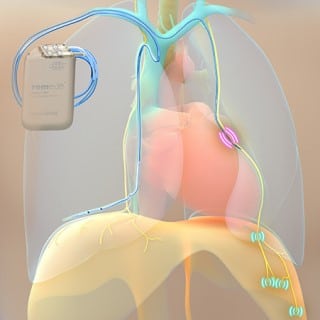
Pros:
- no mask or oral appliance
- minimally invasive outpatient procedure
- simple, easy to use
Cons:
- requires surgery, although minimal (all surgeries carry a small risk)
- some insurers cover on a case by case basis
Recent news:
- ECU Health offers innovative treatment option for patients with Central Sleep Apnea (Dec 2024)
- Respicardia Announces Highmark Coverage for the remed® System in Patients with Central Sleep Apnea
- Transvenous phrenic nerve stimulation (The remede System) shows sustained safety and efficacy through 5 years
- A device to help veterans breathe easier
- Treatment Benefits of Remed System Sustained Through 36 Months in Patients with Central Sleep Apnea
- Therapy Update: Implanted Neurostimulators for Sleep Apnea
eXciteOSA:

How it works: Retrains the tongue and upper airway muscles to stay in position so that the airway is not obstructed
Recommended for: mild obstructive sleep apnea, snorers
Proof it works: clinical studies
Pros:
- comfortable and easy to use
- daytime treatment
- use for 20 minutes during the day while awake
- after 6 weeks, only have to use once a week
Cons: not for moderate or severe apnea
Availability: US (prescription required), UK, Germany
Insurance coverage: not currently covered by insurance, but it is FSA and HSA compatible
Made by: Signifier Medical Technologies
Recent news:
- Signifier Medical Technologies Secures European Union Medical Device Regulation (EU MDR) Certification for eXciteOSA® (Feb 2025)
- Signifier Medical Technologies treats 10,000 patients with wireless, smart sleep apnea therapy (2023)
- High-tech sleep apnoea gadget that could save snorer’s lives by zapping their tongue could be made free on the NHS after successful trial (2023)
- Signifier Medical Technologies’ eXciteOSA®, the Only FDA-Authorized Daytime Therapy for Primary Snoring and Mild Obstructive Sleep Apnea, Demonstrates Real-World Adherence to Treatment of Over 80% (2022)
- Ditch the earplugs! £648 device worn during the day sends electric currents to the TONGUE to strengthen muscles and cut snoring by more than 20%
- FDA approves new device to reduce snoring and sleep apnea that’s worn for just 20 minutes during the day
- FDA authorizes eXciteOSA device for snoring and mild sleep apnea
GENIO Implantable Stimulator:
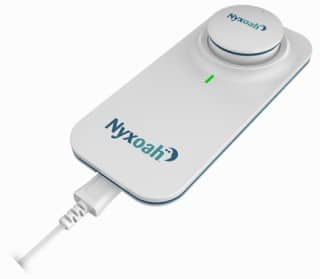
How it works: A tiny neurostimulator is implanted close to the nerve of the tongue and turned on at night by placing an activation chip placed under the chin. This triggers the tongue to contract and open the airway.
Recommended for: obstructive sleep apnea
Proof it works: In progress
Availability: Approved in EU, undergoing clinical trials in US
Insurance coverage: To be determined
Made by: Nyxoah
Recent news:
- OSPREY Obstructive Sleep Apnea Trial Achieves Positive Predictive Outcome (Mar 2024)
- Nyxoah raises $3M to develop neural modulation technology for treating sleep disorders (2023)
- FDA Approves Genio® 2.1 For Use in DREAM U.S. IDE Pivotal Study (2022)
- First US patient implanted in the DREAM pivotal IDE study, with the Genio® system for the treatment of Obstructive Sleep Apnea
- Nyxoah Gets FDA OK to Begin Study on Its Implanted Neurostimulator for Sleep Apnea
- Novel hypoglossal nerve stimulation device improves OSA
- Nyxoah announces data demonstrating the benefits and safety of its Genio® system implantation technique
- Nyxoah’s Genio Implant for Obstructive Sleep Apnea Cleared in Europe
Therapy Update: Implanted Neurostimulators for Sleep Apnea
THN Sleep Therapy (aura6000):
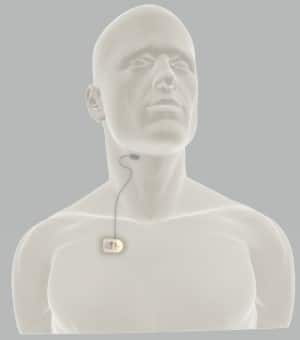
Pros:
- minimally invasive, surgically implanted system usually as an outpatient procedure with quick recovery time
- procedure is completely reversible
- no masks, hoses, or mouthpieces
Cons: requires surgery, although minimal (all surgeries carry a risk)
Availability: In clinical trials
See if you qualify to participate
Cost: To be determined
Insurance coverage: To be determined
Made by: LivaNova
SUSPENSION LINES
AirLift:
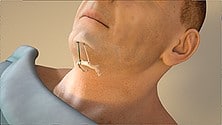
How it works: Uses suspension lines to reposition the hyoid bone or tongue to hold the airway open
Recommended for: obstructive sleep apnea
Proof it works: clinical studies (see “Publications”)
Pros:
- minimally invasive, well-tolerated
- reversible
- can be performed in an outpatient setting
- no mask or oral appliance to wear
Cons:
- surgery
- requires implant of screws and sutures which some may find intrusive or uncomfortable
Availability: US
Find an AIRLIFT trained Doctor
Insurance coverage: yes
Made by: Siesta Medical, Inc
NO LONGER AVAILABLE
NightBalance:
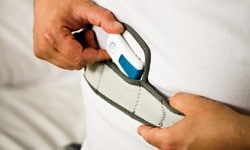
Availability: discontinued
Philips Respironics discontinued sales of NightBalance in September 2023 but will support existing devices until May 2027.
Made by: Philips
- How the Sleep Therapy Sector Is Responding to Philips Respironics’ Exit (Mar 2024)
- Philips introduces NightBalance device for sleep apnoea
- Philips launches NightBalance, increasing therapy options for positional obstructive sleep apnea patients
- Why Clinicians May Miss Identifying Patients Who Could Benefit from Positional Sleep Apnea Therapies
Provent Sleep Apnea Therapy:
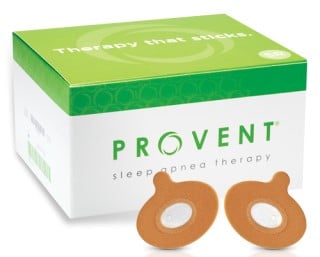
Status: discontinued
Made by: Provent Sleep Therapy, LLC
C) How to try out the latest sleep apnea devices and treatment options
Ready to take one of the newer sleep apnea devices out for a test drive?
Here are some things that can help move the process along:
Do your homework – Educate yourself about the various options so that you’re ready to discuss pros and cons with a doctor.
Schedule a doctor appointment – A sleep specialist will play an important role in helping you figure out which treatments are worth trying, getting the prescription, and qualifying for insurance.
Work with your sleep specialist – As you try out a new treatment, they may be able make adjustments so that it works better for you.
Some of the latest sleep apnea devices may not yet be available because they haven’t been approved for use.
If you’re interested in something that’s still in development, talk to your doctor and the manufacturer about trying it out as a participant in a clinical trial.
E) What else can I do for my sleep apnea?
Don’t limit your quest for better sleep to sleep devices only.
Be sure you’re practicing good sleep hygiene so that you’re not sabotaging your sleep apnea treatment.
Sleep hygiene sets the stage for good sleep. Once you fall asleep, your sleep apnea treatment will help you sleep more deeply with fewer breathing interruptions.
Some other practical things you can do:
Weight loss – Excessive weight has been linked to sleep apnea. Studies have shown weight loss can help improve symptoms and, in some cases, eliminate the need for surgery or long-term CPAP therapy.
Avoid alcohol and smoking – Both have been linked to sleep apnea in studies. Alcohol can relax the throat muscles that control breathing. Tobacco use can worsen inflammation and swelling in the airway.
Change your sleep position – Over half of obstructive sleep apnea cases are due to sleep position. Sleeping on your side or stomach are believed to help keep the airway open. If you’re not a natural side sleeper, some of the new sleep apnea devices (positional therapy) can help retrain your body.
F) Insurance tips
Some of the latest sleep apnea treatments may only be partly covered or only on a case by case basis. Your doctor will be important for getting you qualified and working with your insurance provider.
Some things to try if you are denied coverage:
- Make sure the right billing codes were used and the claim properly submitted
- Check your policy to see if the claim was legitimately denied
- Ask your HR department for help
- Contact your insurance company directly
- File an appeal
- Check with your state insurance department
Organizations that help with insurance claims:
Patient Advocate Foundation
Alliance of Claims Assistance Professionals
Consumer Coalition for Quality Health Care
What else you can try if you don’t have insurance coverage:
- Ask your doctor for suggestions
- State-Sponsored Programs
- Health Programs for Veterans
You may also be interested in:
Sources:
1. A novel nasal expiratory positive airway pressure (EPAP) device for the treatment of obstructive sleep apnea: a randomized controlled trial. Sleep. 2011; 34(4):479-85.
2. Nasal Expiratory Positive Airway Pressure Devices (Provent) for OSA: A Systematic Review and Meta-Analysis. Sleep Disord. 2015; 2015: 734798.
3. Evaluation of Continuous Negative External Pressure (cNEP) for the Treatment of Obstructive Sleep Apnea: A Pilot Study. J Clin Sleep Med. 2017; 13(8):1009-1012.
4. A multicenter evaluation of oral pressure therapy for the treatment of obstructive sleep apnea. Sleep Med. 2013 Sep;14(9):830-7.
5. Assessment of a neck-based treatment and monitoring device for positional obstructive sleep apnea. J Clin Sleep Med. 2014; 10(8):863-71.
6. Outcome after one year of upper airway stimulation for obstructive sleep apnea in a multicenter German post-market study. Laryngoscope. 2018; 128(2):509-515
7. Sustained 12 Month Benefit of Phrenic Nerve Stimulation for Central Sleep Apnea. Am J Cardiol. 2018; 121(11):1400-1408.
8. Transvenous neurostimulation for central sleep apnoea: a randomised controlled trial. Lancet. 2016; 388(10048):974-82.
9. Targeted hypoglossal nerve stimulation for the treatment of obstructive sleep apnea: Six-month results. Laryngoscope. 2016; 126(11):2618-2623.
10. Targeted hypoglossal neurostimulation for obstructive sleep apnoea: a 1-year pilot study. Eur Respir J. 2013; 41(2):360-7.
11. Weight loss for obstructive sleep apnea: the optimal therapy for obese patients. J Am Diet Assoc. 1994; 94(11):1291-5.
12. Alcohol and the risk of sleep apnoea: a systematic review and meta-analysis. Sleep Med. 2018; 42: 38–46.
13. Interaction between smoking and obstructive sleep apnea: not just participants. Chin Med J (Engl). 2012; 125(17):3150-6.
14. The role of sleep position in obstructive sleep apnea syndrome. Eur Arch Otorhinolaryngol. 2006; 263(10):946-50.
Connect with us:
About Us
Better Sleep Simplified® was founded as a place for you to get clear and well-researched information.
Our goal is to make sure you know about your options so that you take action sooner rather than later.
Check us out on YouTube:
Watch and Learn
Helpful sleep tips, interesting sleep facts and statistics you want to know about
Affiliate Disclosure
This site is a participant in the Amazon Services LLC Associates Program and other affiliate advertising programs designed to provide a means for sites to earn advertising fees by advertising and linking to them.
Important: BetterSleepSimplified.com is for informational purposes only and is not intended or implied to be a substitute for professional medical advice, diagnosis, or treatment. Always consult a physician for sleep and health concerns. See additional information.

